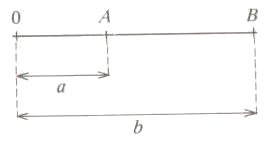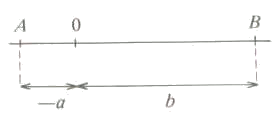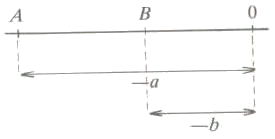Euclidian distance
The absolute value allows to define the distance between two real numbers.
Given two numbers
Let's see the different cases that we can find:
As we can see in the figure:



In general, we can say that the distance between two numbers
Properties of the Euclidian distance
As consequences of the properties of the absolute value we see that, considering three real numbers
Example
The absolute value and the distance defined previously are named as Euclidean norm and Euclidean distance, respectively. These represent the most intuitive distance concept on the real line.
